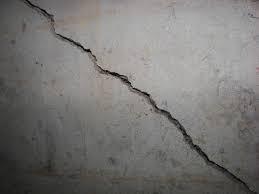Concrete is a versatile construction material known for its strength and durability. However, it is not immune to cracking, which can compromise its integrity and aesthetics. Understanding the causes, types, and mitigation of cracking is essential for ensuring the long-term performance of concrete structures. This article will delve into the reasons behind crack width calculation concrete cracking, the different types of cracks, and methods to limit and calculate crack widths.
Reasons for Cracking:
- Shrinkage: One of the primary reasons for concrete cracking is shrinkage. As concrete cures and dries, it undergoes volume reduction, leading to internal stresses and surface cracks.
- Temperature Changes: Fluctuations in temperature can cause concrete to expand and contract, leading to thermal cracking. This is especially common in regions with extreme temperature variations.
- Excessive Loading: Overloading or uneven distribution of loads on a structure can induce flexural cracks. These cracks often occur in areas of high stress, such as beams and columns.
- Chemical Reactions: Certain chemical reactions within concrete, such as alkali-silica reaction (ASR) or sulfate attack, can weaken the material and cause cracking.
- Poor Construction Practices: Inadequate curing, improper mix proportions, or inadequate reinforcement placement during construction can contribute to cracking.
Types of Cracking :
- Shrinkage Cracks: These cracks typically occur due to the drying and curing process. They are often small, uniform, and appear on the surface of the concrete.
- Thermal Cracks: Temperature fluctuations can lead to thermal cracking. These cracks may be linear or irregular and can occur in various locations within a structure.
- Flexural Cracks: Excessive loading or structural design flaws can result in flexural cracks, which are typically found in beams, slabs, and columns. They appear as diagonal or horizontal lines.
- Settlement Cracks: Uneven settling of the foundation or underlying soil can cause vertical cracks, particularly in walls and foundations.
- Map Cracking: These cracks form a pattern resembling a map, often due to surface shrinkage or improper curing.
- Random Cracking: Random cracks can result from a combination of factors, such as shrinkage, temperature changes, and structural stresses. They are unpredictable in their appearance.
Crack Width Calculation and Limitation : Controlling and limiting crack widths in concrete structures is essential to ensure both aesthetic appeal and structural integrity. Crack width calculation is typically performed using engineering codes and guidelines. The most commonly used method is the ACI 224R-01, which accounts for factors like concrete properties, reinforcement, and environmental conditions.
The limitation of crack width varies depending on the type of structure and its intended use. In general, cracks should be kept as narrow as possible. Common limitations include:
- Structural Elements: For structural elements, such as beams and columns, crack widths are often limited to 0.02 to 0.04 inches (0.5 to 1.0 mm) to maintain structural integrity.
- Aesthetic Considerations: For surfaces where aesthetics are crucial, such as architectural concrete, the crack width may be limited to as low as 0.01 inches (0.25 mm).
Minimizing Cracking : Preventing cracking in concrete structures involves a combination of good design, construction practices, and maintenance. Here are some effective strategies to minimize cracking:
- Proper Mix Design: Ensure the right concrete mix with adequate proportions of aggregates, cement, water, and admixtures to reduce shrinkage and improve durability.
- Controlled Curing: Implement appropriate curing methods, such as wet curing, curing compounds, or curing blankets, to maintain adequate moisture levels during the early stages of concrete curing.
- Reinforcement: Use the right type and amount of reinforcement, such as steel bars or fibers, to enhance the structural capacity and control crack widths.
- Joint Design: Incorporate control joints and expansion joints in the design to accommodate natural movements and prevent cracks from spreading.
- Proper Construction Practices: Ensure proper placement, consolidation, and finishing techniques during construction to reduce the risk of cracking.
Cracking in concrete structures is a common challenge but can be effectively managed through proper design, construction, and maintenance practices. Understanding the causes and types of cracks, along with limitations on crack width, is crucial. By implementing strategies such as appropriate mix design, controlled curing, and reinforcement, engineers and builders can ensure the durability and longevity of concrete structures while maintaining their visual appeal. Additionally, regular inspections and maintenance can help identify and address cracks before they become significant issues, ensuring the safety and functionality of concrete structures for years to come.
